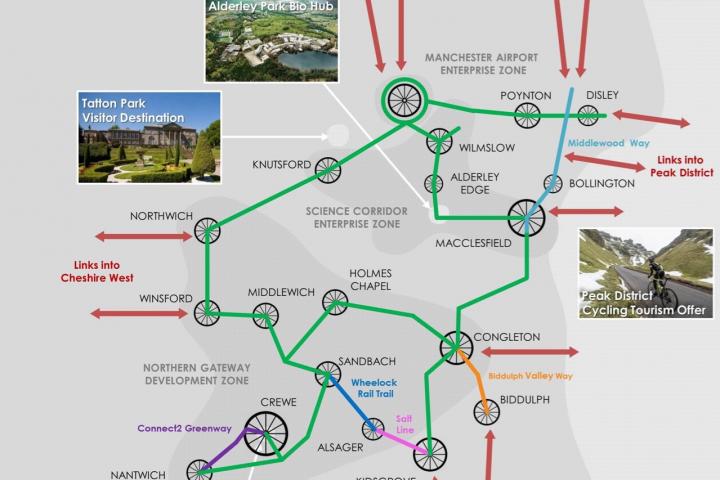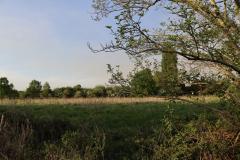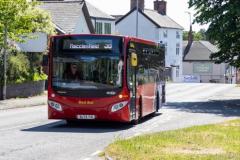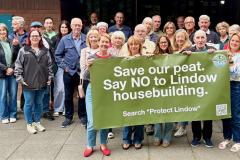
Cheshire East Council has unveiled their strategy to double the number of people cycling in the borough.
The authority's ambition is a 'step change' in the take up of cycling by residents of all ages across Cheshire East, with a vision 'to enable more people to cycle safely, more often and with confidence for everyday and leisure journeys'.
The plan will deliver a cycle-friendly network of key routes connecting people and places which will link with local routes to connect residents and visitors to jobs, schools and leisure opportunities.
The council will work with partners and local cycling groups to deliver the cycling strategy over the next 10 years. Cheshire East aims to double the number of local people cycling at least once a week by 2025*.
Speaking after the cycling strategy was formally backed by cabinet on Wednesday, 15th March, Councillor David Brown, deputy leader of Cheshire East Council, said: "This is fantastic news. In adopting this strategy there is a real opportunity to capitalise on increased public awareness and interest in cycling following Cheshire East's hugely successful hosting of stage three of the Tour of Britain last September.
"The council's cycling strategy demonstrates how we intend to deliver a high-quality cycle network so that people of all abilities will be able to travel safely around the borough by bike – and help put cycling on the map in Cheshire East.
"Cycling has so many well-recognised benefits – not just for individuals' health, wellbeing and pockets, but also our wider communities, environment and businesses.
"It will also help the council achieve its wider ambitions, set out in our corporate plan, by making Cheshire East a green and sustainable place, enabling people to live well and for longer and helping ensure Cheshire East has a strong and resilient economy.
"I would like to thank our local cycling groups and residents who responded to our online survey for their enthusiasm and assistance in the development of this document – whose aims have won the support of a thumping 89 per cent of all respondents.
"The message is clear: by cycling regularly you'll be healthier, happier and wealthier – and it's great for businesses, the visitor economy and the environment too."
To deliver the cycling strategy, funding will be needed from a wide range of sources. Current funding streams accessed to improve the cycle network across the borough in 2017/18 onwards include:
● Share of £5m allocated to Cheshire and Warrington LEP by the Local Growth Fund to improve cycle routes which link key housing and employment and development sites;
● £500,000 Local Growth Fund match funding by Cheshire East Council;
● £612,445 secured from the Department of Transport to fund Bikeability cycle training for children;
● Commitment from Network Rail to construct cycle facilities alongside the proposed rail replacement bridge on the A530 at Leighton, Crewe;
● Developer funding as part of planning consent agreements.
The cabinet decision means the cycling strategy document will become part of the council's transport strategy framework.
Map of key cycle routes network










Comments
Here's what readers have had to say so far. Why not add your thoughts below.
David Brown is the Cabinet Member with responsibility for potholes and was only recently telling us what a splendid job they were doing.
They also need to recognise that there are two sorts of cyclists. The ones who want to get onto their bikes and cycle slowly to get their shopping, and the others - the increasingly large number, who wear their expensive "kit" and who cycle head down and as fast as they can in a massive group. One section of Adlington Road, from the bridge up to the junction with the Care Home, cycle clubs use as a "timed test" because of its gradient.
Cyclists are as legally entitled to use the roads as are cars. Bikes have a right to be there. Many UK motorists seem unaware of this and barely tolerate cyclists on 'their' roads.
However, no cyclist wishes to expose their unprotected flesh and bone to (generally) not very skilled or considerate car drivers in charge of a couple of tons of speeding metal any more than they need to. So If cyclists are not using cycle paths there's generally a good reason. Broken glass, litter, road debris, or just a plain poor surface are the usual reasons. Take a look in the gutter of a road where cars don't run and note the detritus that lodges there. Cycle paths are often in a similar state.
And cycle paths often suddenly terminate, especially at road junctions or roundabouts, just when they are most of value to the cyclist, who is expected to dismount and become a pedestrian - but with a bike! If I'd wanted to be out for a walk I would have left my bike at home! Why would a cyclist use a system that every few hundred metres ceases to exist just when it's needed? No wonder they stick to the roads.
They do cycle paths properly in some countries, such as Holland and Denmark. In UK they are a often a 'tick the box' exercise by a local authority who have no intention of making them viable for the cyclist. But hey, white paint is cheap!
Fine cyclists for ignoring them? I don't think so!
It is too simplistic to put cycle users into just two camps. As with motorists they take many forms: from the lycra-clad club cyclists, to commuters, leisure riders, school children, shoppers etc...As with other road users (pedestrians, vehicle drivers) cycle users will display differences in confidence, road-craft etc. Some will prefer to use off-road facilities (cycle paths) whilst others will prefer to use the more direct route, on-highway. In much the same way, some motorists will prefer using an A road to a motorway. Both are fine - they are just personal preferences.
Vince makes a number of good points. People will use the easier/safest/most direct facilities they encounter. If a cycle path involves you having to dismount at each junction you come across it will not be tempting to use it.
The key is that our existing roads are safe with decent surface quality (and lighting where needed). Any new dedicated cycling facilities are well-designed (best-practice) and executed, offering an attractive alternative to existing options.
I do wish all councillors and planners setting up bike routes would try cycling around more first. When the National Trust offered enough land to build a proper cycle path up Worm's Hill on the edge of the Styal Estate, the council put steps instead, claiming that it was too steep for a ramp - in complete contrast to what our own surveyors had proved would fit.
And then all those bike lanes that stop in silly places, or have give ways to drives/small roads. Who would want to use those?